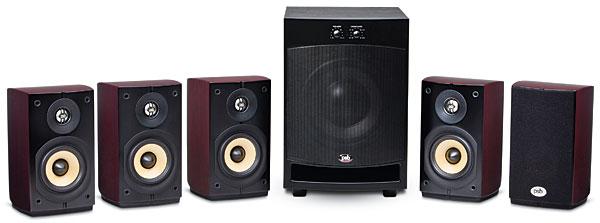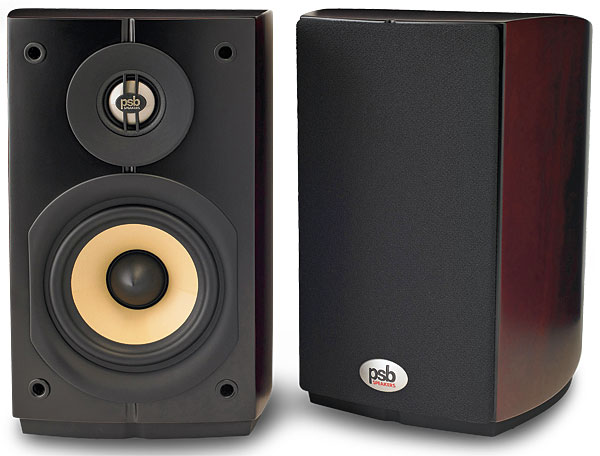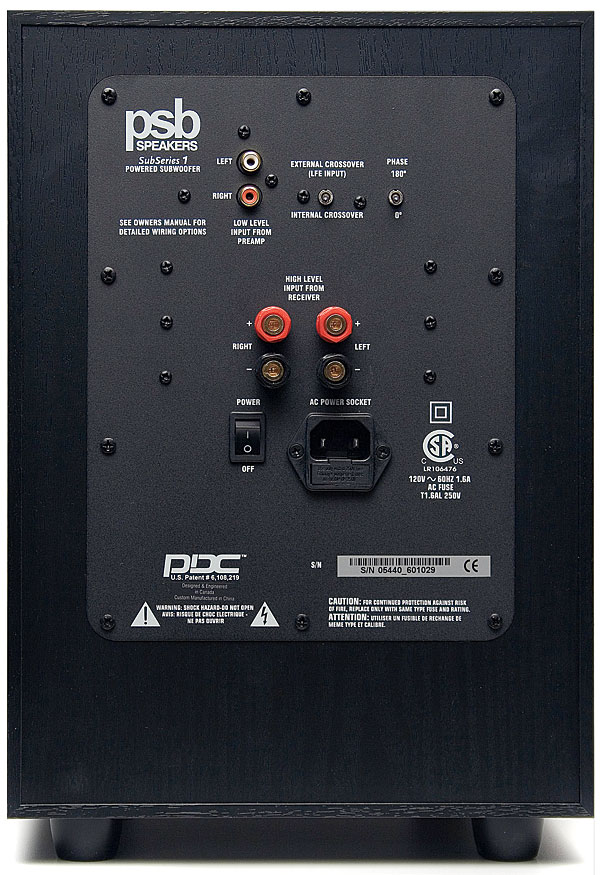PSB Imagine Mini Speaker System

A few decades ago, the Canadian government’s National Research Council built an anechoic—that is, non-echoing—chamber in Ottawa for the testing and refinement of loudspeakers. This investment nurtured a whole school of speaker designers. Paul Barton of PSB was among the earliest and most distinguished to emerge. Five years ago, Barton embarked on a wholesale redesign of his speaker lines, summing up his considerable experience and adding improvements made possible by the lowered cost of manufacturing in China. Yes, some manufacturers actually use China’s industrial prowess as an opportunity to improve their products. Barton regularly visits his contract manufacturers to ensure they’re delivering the quality he demands in his high-performing loudspeakers.
Barton redesigned his in-room lines from the top down. The first series to emerge from this global rethink was the top-of-the-line Synchrony, which features extruded aluminum front and rear panels and curved five-layer veneer side panels held together by double-locking aluminum corners. The second series was the Imagine, bolstered by trickle-down technology from the Synchrony. The third was the more affordable Image, a redesign of the original Image.
What’s interesting about the Imagine Mini is that it’s the latest and smallest addition to the number-two Imagine line. PSB has offered world-beating mini-monitors before—notably the Alpha and Alpha Mini, legendary value champions. But with the Imagine Mini, PSB is raising its small-speaker offerings to a higher level of design, construction, and performance.
Doubly Curved
The Imagine Mini enclosure is constructed with five layers of medium density fiberboard. Its sides curve around toward a continuously rounded back. The top is curved as well, sloping down toward the back. In my review samples, the curves
were executed in a Dark Cherry veneer with a satin finish that was a pleasure to look at and even to touch.

When I pulled off the grille, which is both fabric-covered and perforated, I noticed its lack of flex. Both the grille and the pins that fasten onto the baffle are metal. Behind the grille are two drivers with no visible screws or other fasteners.
The 1-inch titanium-dome tweeter is similar (though not identical) to that in the step-up Synchrony Series. It’s mounted in an unusual round rubber waveguide whose edges protrude slightly from the baffle. Covering the center of the diaphragm is a PSB badge that serves as a phase plug. It controls response and improves off-axis dispersion. The drivers are mounted close together, with a 2.2-kilohertz crossover that’s unusually low relative to the woofer size. This further improves off-axis response and reduces unevenness at the crossover. (See HT Labs Measures to find out how that worked out.)
The 4-inch woofer cone is an exclusive blend of clay- and ceramic-filled polypropylene that’s said to resist breaking up compared with a conventional polypropylene cone. The woofer includes an unusual Turbo-Magnet structure that aims to improve bass extension by adding an extra magnet to the top of the pole piece (the part of the motor structure that sits inside of the voice coil).

Two gray plastic pieces form the back and rubber-footed bottom. The back piece incorporates both the port and a pair of holes that admit speaker cable. The port is an unusual shape, with its sides curving inward—seen from the side, it’s the shape and size of an open human mouth (without the teeth). I was even more intrigued by the half-inch-wide holes leading to the gold-plated binding-post speaker terminals, which live in a recess on the bottom—not the back—of the speaker.
My heart sank when I first saw the holes: Surely they weren’t wide enough to admit my MonsterCable 1.2S. This initial impression proved to be wrong. The holes were just wide enough for the cable’s fat rubber plug jackets. I unscrewed the binding-post nuts from the bottom, and I managed to push in the banana plugs through the sides of the posts and fasten the nuts snugly. When I was done, my cables were securely anchored in the binding posts without the unsightly cable bulges and bends that are inevitable with ordinary back-mounted binding posts. This is the most intelligent binding-post layout I’ve ever seen. It’s among the numerous little things that make these speakers special.
By the time you read this, PSB will offer a choice of stands or wall brackets, both optional. Details weren’t available at press time.

The PSB subwoofer lines include both dual-driver and single-driver models (as well as in-wall and in-cabinet). The SubSeries 1 is the most affordable member of the single-driver SubSeries line. An 8-inch front-firing driver is built into a slim but deep enclosure with a wide slot-shaped port below the driver. The driver includes a 1.5-inch voice coil, a 48-ounce magnet assembly, and a fat rubber surround that allows considerable back-and-forth excursion. PSB displays its independence (and mercy toward the user) with front-mounted controls for volume and crossover. This makes bass tweaking almost effortless. Don’t want to hear voices booming out of the sub? Could that explosion have used more oomph? A twist of the knob, and soon you’ll be back on the sofa, happier than ever.
- Log in or register to post comments































































